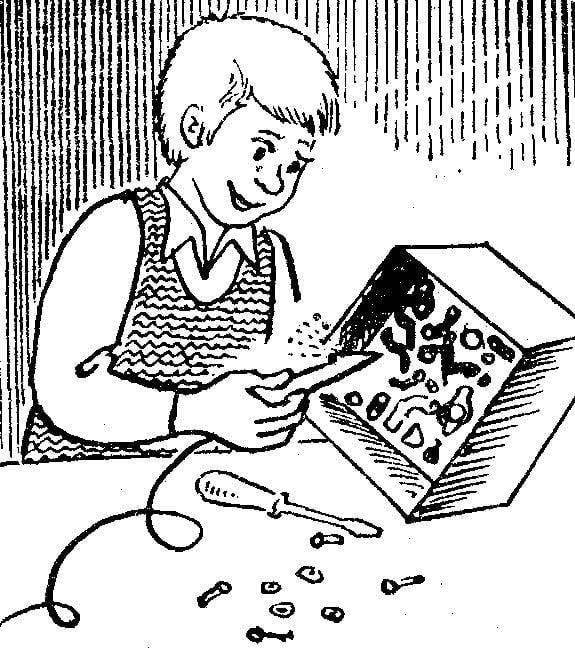 Electric circuit “call” usually with a tester or device with audible indication. The probe, about which we talk today, informs about the health of an electric circuit with a light signal. He exhibited at the 29th all-Union exhibition of creativity of radio fans-designers. With such a device it is easy to find broken or short-circuited sections in strings and cables, checked relays, resistors, capacitors, fuses, light bulbs, determine the status of the p-n junctions for diodes and transistors. An indicator is a miniature light bulb, for example, CMH10-50.
Electric circuit “call” usually with a tester or device with audible indication. The probe, about which we talk today, informs about the health of an electric circuit with a light signal. He exhibited at the 29th all-Union exhibition of creativity of radio fans-designers. With such a device it is easy to find broken or short-circuited sections in strings and cables, checked relays, resistors, capacitors, fuses, light bulbs, determine the status of the p-n junctions for diodes and transistors. An indicator is a miniature light bulb, for example, CMH10-50.
The probe works in the following way. When the circuit input terminals ka base V1 (Fig. 1) is fed a positive voltage, the transistors V1 and V2 are opened and begin to work multivibrators V3, V4. Included in the collector circuit of the transistor V3 incandescent light H1 flashes with a frequency of 3-5 Hz.

Fig. 1. Schematic diagram of the probe.
When the circuit is broken, the transistors V1 and V2 are closed, the multivibrator is not working and the lamp is off.
Using the tester you can test the circuit with a resistance up to 100 ohms. The current in the studied area is not more than 200 µa.
The device is powered from a battery “Crone” (9). Maximum consumption current — 20 mA (pulse).
The device is mounted on a double sided PCB (Fig. 2). V1 — V4 — transistor matrix К1НТ251 with planar (i.e. positioned in the same plane) conclusions. Place items on the Board shown in figure 3.

Fig. 2. Printed circuit Board tester.

Fig. 3. The location of the parts on the PCB probe.
Structurally, the probe is made in the form of small probe (Fig. 4). Its body is the same published in the “M-K” № 10, 1978, p. 40.

Fig. 4. The design of the probe:
1 — needle, 2 — wire MGTF 0.07 mm2, 3 — acrylic, 4 — lamp SMN 10-50-2, 5 — tab, 6 — housing, 7 — wire MGTF 0,14 mm2, 8 — threads, sewing cotton, No. 0, 9 — vinyl chloride pipe, 10 — plate.
If all items test normal, the device starts working without any additional configuration.
A. ZHIZHCHENKO, N. PASTUSHENKO. Kiev



